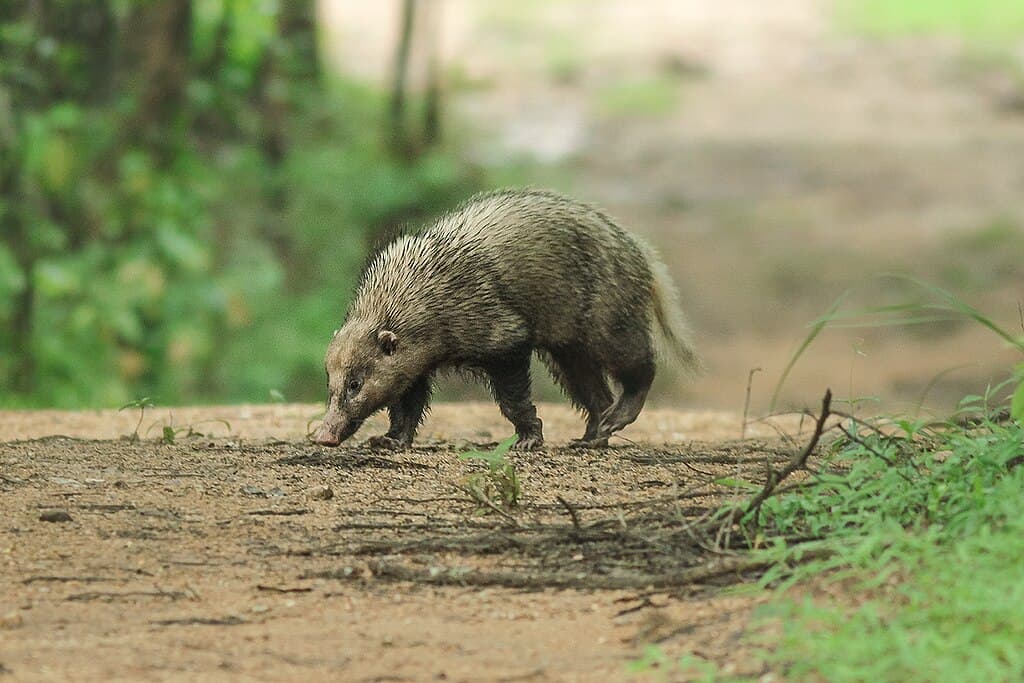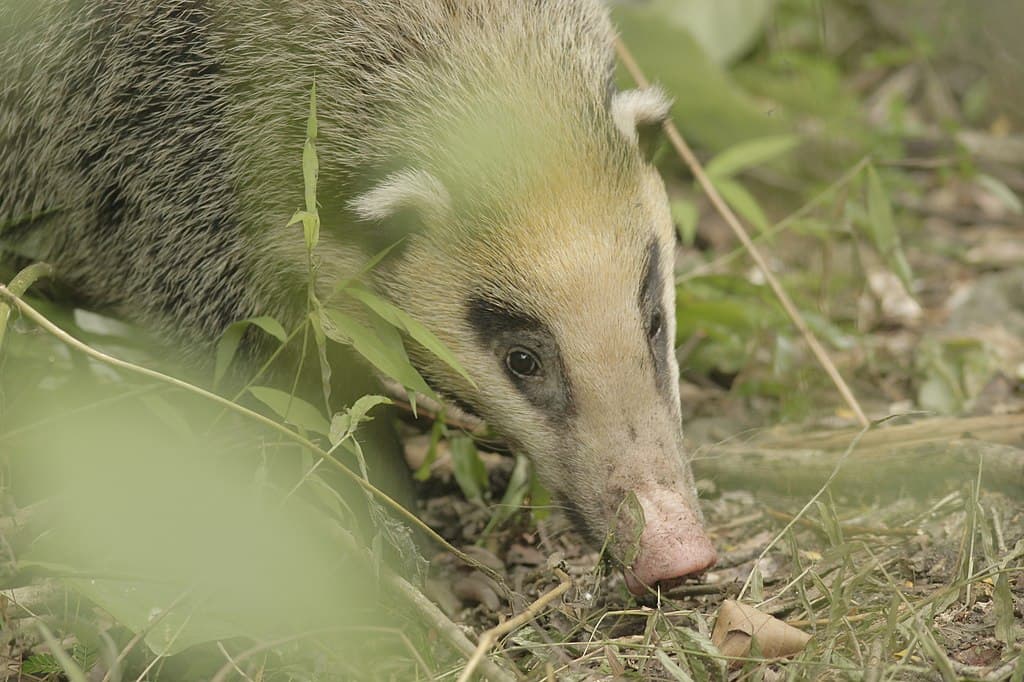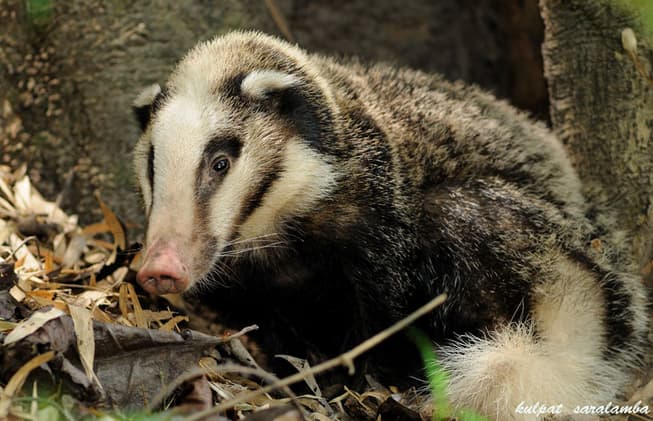The greater hog badger aka the greater badger (ជ្រូកពោន/ជ្រូកពុល) is a large mustelid that is native to Southeast Asia. This mustelid is one of the least known animals, and Cambodian people are not familiar with them. Just like other articles in this category, we are going to look into some information about this animal. I sure hope you like reading about greater hog badgers.
Appearance

A greater hog badger has a stocky body that weighs up to 14 kilograms. This mustelid looks like a hog, with medium-length brown hair, a white throat, and two black stripes on its white snout. As for the nose, it is pink and it looks like a pig’s nose. Looks like a large wild pig, they have a large head and sturdy legs with a grizzly gray-to-tan coat. With massive foreclaws, greater hog badgers can dig tunnels for shelter and food with ease. Greater hog badgers are one of the largest terrestrial extant mustelids in the world, only second to the wolverine.
Behavior
This mustelid is active during the day but quite secretive, and they are not really afraid of humans. The unique thing about them is that they have the ability to burrow underground holes or tunnels. Building their own home, it is normal for them to be quite territorial. They mark their territories with secretion from their musk glands and urine on grass, rocks, and tree trunks. Generally, they are shy so seeing them is very rare. Greater hog badgers are solitary, and they travel to places by themselves. When they are not active, they will rest and stay safe in their burrows.
Feeding & Habitats

Normally, greater hog badgers feed on fallen fruits, roots, and tubers. At the same time, they also eat invertebrates and small vertebrates on the forest floor if they can find any. These omnivores will find insects, small mammals, and their most favorite item which is terrestrial worms as well.
The elusive hog badgers are common in undisturbed lowland and deciduous forests or hilly mixed evergreen forests. They also inhabit montane forests in Southeast Asia where they feed on anything that they can find. In some regions, greater hog badgers also live in semi-evergreen forests, tropical evergreen, and tropical rainforests.
Threats
This mustelid species is classified as Vulnerable due to the population decline of over 50% just within 15 years in Indochina. What threats their numbers is the decline of their habitats as the forests keep shrinking every day. While their natural home is diminishing, they also have to face hunting, illegal trade, and snaring crisis. In nature, the only primary predator of these mustelid are dholes, leopards, and tigers.
Related Post: Pangolin Facts
